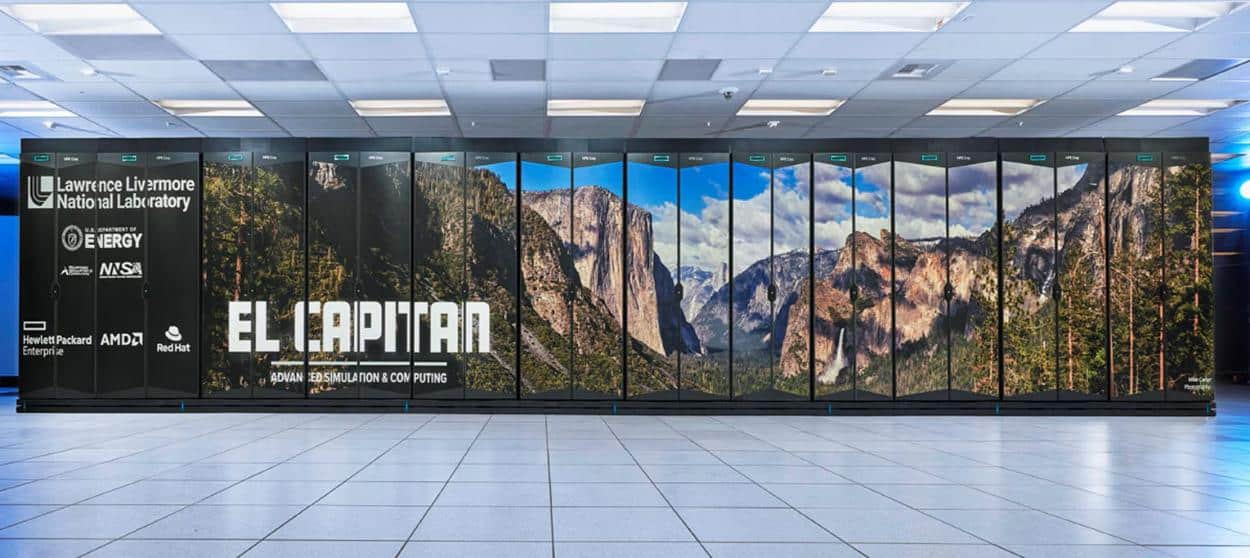El Capitan, the world’s most advanced supercomputer, has officially debuted at California’s Lawrence Livermore National Laboratory (LLNL).
El Capitan, built for $600 million, is mainly responsible for managing sensitive national security activities. This includes ensuring the safety of the U.S. nuclear arsenal, which cannot undergo underground testing due to a ban in place since 1992. Additionally, it will facilitate substantial research in areas such as high-energy-density physics, materials discovery, nuclear data analysis, and weapons design.
El Capitan Capabilities
El Capitan has distinguished itself as the fastest supercomputer worldwide, achieving 1.742 exaFLOPS in the High-Performance Linpack (HPL) benchmark and a peak performance of 2.746 exaFLOPS.
This milestone makes it the third machine globally to reach exascale speeds, which can perform up to one quintillion calculations per second. In comparison, the second-fastest supercomputer, Frontier at Oak Ridge National Laboratory in Illinois, has reached 1.353 exaFLOPS, with a peak of 2.056 exaFLOPS.
El Capitan Technical Specifications
According to The Next Platform, El Capitan has more than 11 million processing and graphics cores within 44,544 AMD MI300A accelerated processing units. These units blend AMD EPYC Genoa CPUs and AMD CDNA3 GPUs with shared computing memory, each featuring 128 gigabytes of high-bandwidth memory, which enhances computational efficiency and reduces power usage.
Construction of El Capitan began in May 2023, and the system became operational in November 2024. Its official dedication occurred on January 9, 2025. Funded by the U.S. The Department of Energy’s CORAL-2 program, El Capitan, succeeds the Sierra supercomputer. Launched in 2018, Sierra currently holds 14th on the Top 500 list of the most powerful supercomputers globally.
The launch of El Capitan is expected to bring substantial progress in computational science and national security research, heralding enhanced high-performance computing capabilities.






